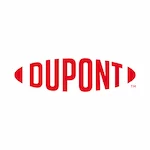
- Published 2024
- No of Pages: 200
- 20% Customization available
Middle East Food Binders Market Research Report, Analysis and Forecast
Middle East Food Binders Market Synopsis
Food binders are vital components used in the food business to preserve the quality and uniformity of food products. They are used to stabilise, thicken, and bind food products to avoid separation and to improve flavour and texture. Several reasons have contributed to an increase in the need for food binders in the Middle East.

The expanding food sector in the region, which includes food processing and manufacturing, is one of the key factors driving demand for food binders. The need for food binders is anticipated to increase as the food industry develops. Moreover, the region’s expanding population and shifting food tastes, which favour convenience and processed meals, have boosted the demand for food binders.
Another factor contributing to the growth of the food binder market in the Middle East is the increasing focus on food safety and quality. Food binders are essential in ensuring the safety and quality of processed foods, reducing the risk of contamination and spoilage.
According to the United Nations Food and Agriculture Organization (FAO), the Middle East and North Africa region are the world’s largest importers of food binders, accounting for nearly one-third of global imports.
The most popular food binders imported into the Middle East and North Africa region are starches, gums, proteins, and cellulose derivatives.
The majority of food binders imported into the Middle East and North Africa region come from Europe, followed by Asia and North America.
Moreover, the region’s favourable business environment, including government support and investment in the food industry, has also contributed to the growth of the food binder market. This has led to increased competition and innovation in the industry, resulting in the development of new and improved food binder products.
In conclusion, the demand for food binders in the Middle East is expected to continue to grow due to the region’s growing food industry, changing food preferences, focus on food safety and quality, and favourable business environment. As a result, the food binder market is likely to remain an important and lucrative segment of the food industry in the region.
Middle East Food Binders Market: Overview
Food binders are substances that are added to food products to improve their texture, consistency, and stability. They are an essential component of many food products and are used in a wide range of applications, from bakery and confectionery to meat products and sauces.
Food binders can be derived from various sources, including plants, animals, and hydrocolloids. Plant-based binders include ingredients such as guar gum, xanthan gum, and pectin, while animal-based binders include gelatin and egg whites. Hydrocolloids are another common type of binder and include ingredients such as carrageenan, agar, and alginate.
There are various kinds of food binders, including gel-based, protein-based, starch-based, and sugar-based ones. To add sweetness and enhance texture, sugar-based binders such as inverted sugar and corn syrup are frequently employed in confectionery items. Bakery goods, sauces, and dressings frequently contain starch-based binders such as maize starch and modified starches. Products for sports nutrition and meat are frequently made with protein-based binders like soy and whey. Desserts made with dairy and those that are frozen frequently use gel-based binders like gelatin and agar.
Overall, food binders are essential ingredients that play a crucial role in ensuring the quality and stability of a wide range of food products. The demand for food binders in the Middle East is driven by the region’s growing food industry, as well as increasing consumer demand for high-quality, stable food products.
Saudi Arabia Food Binders Market Synopsis
The Food Binders market in Saudi Arabia is growing due to the increasing demand for processed and packaged food products. The country has seen a rise in the number of restaurants, cafes, and other food outlets, which has led to an increased demand for food binders. Additionally, the government has been encouraging the development of food processing industries, which has further boosted the demand for food binders. Furthermore, Saudi Arabia’s population is growing rapidly and this is driving up the demand for processed and packaged foods.
UAE Food Binders Market Synopsis
The UAE Food Binders market is also growing due to the increasing number of tourists visiting the country. The UAE is a popular tourist destination and this has led to an increased demand for processed and packaged foods. Additionally, many international restaurants in the UAE require food binders to produce their dishes. Furthermore, with more people moving to the UAE from other countries, there is an increased demand for processed and packaged foods that require food binders.
Middle East Food Binders Market: Segmentation
The middle east food binders market has been segmented into Source, Type and Application.
Based on the Source, the middle east has a food binders market for plants, Animals, and Hydrocolloids. In 2021, the Hydrocolloids segment held a significant share. It is Because of their outstanding binding, thickening, and gelling qualities, hydrocolloids are natural, plant-derived chemicals that are frequently employed in the food business. The fact that hydrocolloids may be made from a variety of sources, including seaweed, plant gums, and microbial fermentation, makes them a popular option for consumers who prefer food made with natural, plant-based components. Further boosting their demand in the food binders market, hydrocolloids can be found in a variety of food products, such as bakery and confectionery, drinks, dairy and frozen desserts, sports nutrition, meat products, and sauces and dressings.
Based on Type, the market is classified as Sugar Type, Starch Type, Protein Type, and Gel Type. In 2021, the segment is expected to account for a significant share of food binder Starch Type. This is Because of their useful characteristics, such as gelling and thickening, starches are frequently utilised as binders in the food business. They come from several sources, such as corn, wheat, potatoes, and tapioca. Starches are frequently used in a variety of foods, including beverages, dairy and frozen desserts, meat products, sauces and dressings, bakery and confectionery, and frozen desserts. They aid to improve these items’ sensory qualities by adding texture and stability. They are a popular option for food manufacturers because of their low cost and easy availability.
Based on the Application, the middle east has a food binders market for Bakery & Confectionery, Beverages, Dairy & Frozen Desserts, Sports Nutrition, Meat Products, and Sauces & Dressing. In 2021, the Bakery & Confectionery segment held a significant share. This is due to the growing demand for bakery products, such as cakes, bread, pastries, and cookies, as well as the increasing number of bakeries and confectioneries. It is also driven by the changing lifestyles of people, who are now looking for convenient and healthy snacks. Furthermore, the rise in disposable income of consumers is another factor that is boosting the demand for bakery & confectionery products across the world. For instance, the increasing demand for cakes and pastries from the hospitality sector has resulted in the growth of the bakery & confectionery market.
Recent Developments
In 2021, the Middle East food binder space saw several significant developments.
- In 2021, Middle East Food Binders (MEFB) launched a new line of plant-based binders for vegan and vegetarian diets. The new product line is made from natural ingredients such as chickpea flour, tapioca starch, and potato starch. MEFB also announced the launch of a new range of gluten-free binders for those with gluten sensitivities. The company has also partnered with several leading food manufacturers in the region to provide their customers with high-quality binders for their products.
- In 2021, MEFB announced a strategic partnership with a leading food technology company in the Middle East region. This partnership will allow MEFB to leverage the latest technologies and processes to develop innovative solutions for its customers.
- In 2020, MEFB acquired a leading food binder manufacturer in the Middle East region. This acquisition allowed MEFB to expand its product portfolio and increase its presence in the region. The company also announced plans to open a new production facility in Dubai to meet the growing demand for its products
In 2022, there were several acquisitions in the Middle East food binders company space.
- In January 2022, Saudi-based Almarai acquired a majority stake in the UAE-based food binder manufacturer, Al Rawabi.
- In April 2022, Qatar-based Al Meera acquired a majority stake in the Kuwaiti food binder manufacturer, Al Kout Food Industries.
The Middle East Food Binders Market is segmented as follows:
By Type
- Sugar Type
- Starch Type
- Protein Type
- Gel Type
By Source
- Plant
- Animal
- Hydrocolloids
By Application
- Bakery & Confectionery
- Beverages
- Dairy & Frozen Desserts
- Sports Nutrition
- Meat Products
- Sauces & Dressing
By Region
- The Middle East
- Saudi Arabia
- UAE
- Qatar
- Kuwait
- Oman
- Rest of the Middle East
“Every Organization is different and so are their requirements”- Datavagyanik
Companies We Work With






Do You Want To Boost Your Business?
drop us a line and keep in touch

